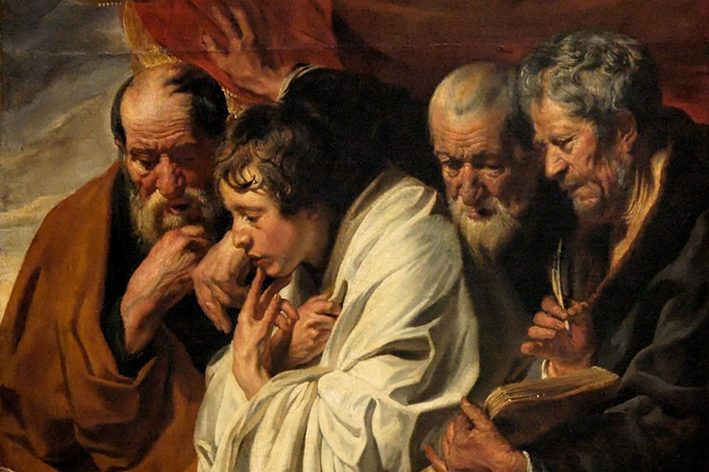
“Dear Father, In reading the Gospels I come across different accounts of the same event, and sometimes there are discrepancies between them. Can we trust the truthfulness of the Gospels when such obvious differences appear?
The discrepancies, rather than being proof that the Gospels are not faithful to the events as they occurred, are rather evidence for their authenticity and truthfulness. But let me explain.
If the accounts of the same event were all identical to each other, it could be questioned whether the writers had conspired among themselves in writing them.
This in turn could cast doubts about whether the events were reported truthfully, or whether they were possibly fabricated. Alternatively, it could be thought that there was really only one eye-witness to the events, which were written down by one evangelist and copied by the others.
If, however, there are slight differences in them, it is what one would expect when different people witness the same event and record later what they remembered. We see this often when a group of people who have witnessed the same event get together to relate what they saw. They all agree on the basic facts, but they remember different details and they may disagree on some of them.
In any case, while there are some differences among the Gospel accounts, usually in minor details, what is remarkable is that there is substantial agreement among them in all the important matters. Let us look at some examples.
We can begin with the account of the healing of the servant of a centurion. Matthew relates that it was the centurion himself who begged Jesus to heal his servant (cf. Mt 8:5-13), whereas Luke says that the centurion sent elders of the Jews to ask for the healing (cf. Lk 7:1-10). This is a very small detail and the explanation is simple. In both cases it was the centurion who asked Jesus to do the healing.
Whether he did it in person or through others, he was the one who asked for it. What is more, both Gospels agree on other significant details: that the request was made in Capernaum, that the centurion said that he was unworthy for Jesus to come under his roof, that Jesus said that not even in Israel had he found such faith, etc.
Matthew says the event took place in the country of the Gadarenes while Mark and Luke say it happened in the country of the Gerasenes …”
Another example is the casting of demons into a herd of swine. Matthew says the event took place in the country of the Gadarenes (cf. Mt 8:28-34) while Mark and Luke say it happened in the country of the Gerasenes (cf. Mk 5:1-20, Lk 8:26-39).
What is important is that the towns of Gadara and Gerasa were close to one another in the Decapolis region to the East of the Sea of Galilee. The people of that area were not Jews and hence could raise pigs, a meat not eaten by the Jews.
Since the miracle did not take place in the town itself but in the countryside, where the swine were feeding, that two of the evangelists called the area that of the Gerasenes and the other that of the Gadarenes is a very small matter.
Another discrepancy in this same account is that Matthew says there were two demoniacs, while Mark and Luke say there was only one. All three, however, agree that there were many demons in the man, or men, that they were fierce and powerful, and that the demons were cast into a large herd of pigs, which rushed down the steep bank into the sea. These were the important details.
As regards whether there was one demoniac or two, we should take into account that it is most likely that Matthew, being an apostle, was an eye-witness to the event, while Mark and Luke may have heard of it later from the apostles. An important discrepancy comes in the genealogies of Christ in the Gospels of Matthew and Luke (cf. Mt 1:1-17, Lk 3:23-38). There are many differences in the names, especially from King David on.
A number of explanations have been given, a very plausible one being that one genealogy traces Jesus’ family tree through Mary’s line and the other through that of Joseph. I dealt with this matter in my book Question Time 4, q. 459.
Finally, another significant difference among the Gospels regards whether the Last Supper was held in the celebration of the Passover, as Matthew, Mark and Luke attest, or whether it was done the night before the Passover, as John writes. This question too I have discussed, in Question Time 3, q. 346.
Related Articles:
Q&A with Fr John Flader: The interpretation of Scripture
Fr John Flader Q&A: The truthfulness of scripture
